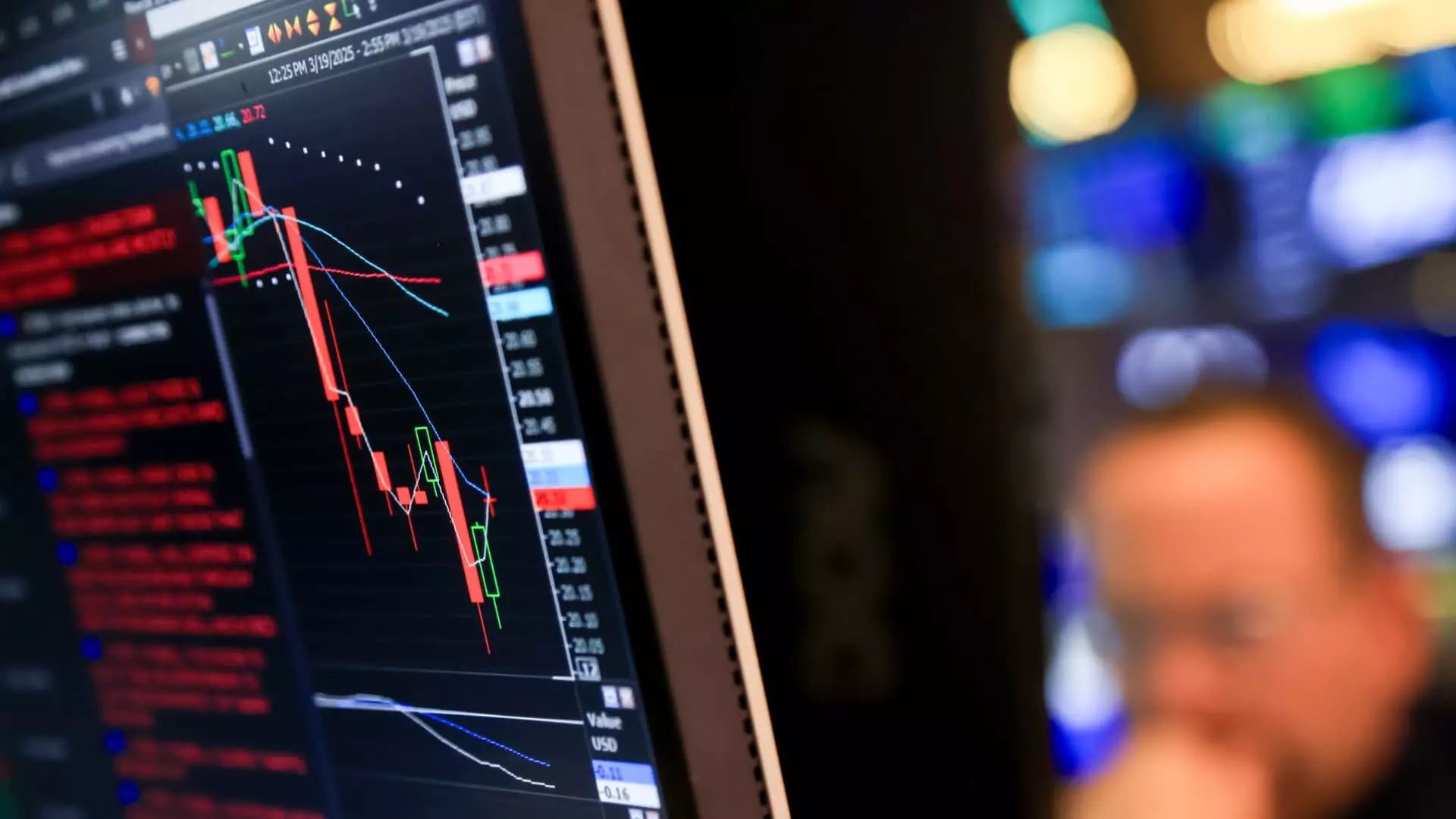In the face of immense stock market volatility, venture capital (VC) firms are grappling with the implications of economic uncertainties exacerbated by U.S. tariffs. The recent chaos in global equity markets has forced both seasoned investors and budding startups to reconsider their strategies. The precarious nature of the financial landscape is becoming evident as major players delay potential initial public offerings (IPOs) and sales, a phenomenon that not only stymies growth but also jeopardizes the fabric of innovation.
Traditionally, venture capitalists rely on successful exits—public listings or acquisitions—to realize gains on their investments. With the surge of privately held startups choosing to remain under the radar longer, the process for VC firms to cash out has turned increasingly sluggish. This stagnation poses notable risks: how can funds continue to draw new investments when existing returns are stifled? The systemic issues plaguing public markets seep into private equity as well, suggesting that the acute forecasting challenges faced by VC firms will only exacerbate an already dire situation.
Delayed Dreams: The Impact of Market Conditions
The announcement of reciprocal tariffs has brought about significant apprehension among investors and startups alike. Major tech companies such as Klarna and StubHub, which recently filed for public offerings, have pulled back their ambitions in light of the market’s disarray. Such delays signal a broader trend affecting the VC landscape: fear is crippling growth-stage companies just when they should be scaling up and making bold moves.
Tobias Bengtsdahl, a partner at Antler’s Nordics fund, encapsulates this viewpoint, acknowledging that the market’s turbulence creates a ripple effect across both public and private sectors. It raises the burning question: how can VC firms maintain optimism when growth prospects are dimmed by external political and economic pressures? This unpredictability presents a unique challenge for later-stage startups that are acutely sensitive to shifts in market sentiment, as they hover closer to going public or securing critical exits.
The Future: A European Renaissance?
Amidst this uncertainty, signs of resilience have begun to emerge, particularly within Europe. Sanjot Malhi, a partner at Northzone, argues that a potential silver lining of this downturn is the opportunity for European tech startups to thrive. If U.S. markets tighten and lose their allure, could the entrepreneurial spirit of Europe become the new epicenter of innovation? A growing sense of responsibility among European founders suggests they are increasingly inclined to remain and develop their businesses in a unified tech landscape.
Christel Piron, CEO of PSV Foundry, echoes this sentiment, emphasizing that founders are now prioritizing the mission of building a resilient European tech nation. This emerging trend speaks volumes about the evolving landscape; rather than simply reacting to external pressures, entrepreneurs are taking active steps to redefine their paths, creating a distinct identity for European tech ecosystems.
Bridging the Capital Gap: Alternative Paths to Exit
VC firms must now navigate a revised exit strategy amidst the uncertainties of market conditions. Not only are IPOs becoming more elusive, but the alternative path of mergers and acquisitions (M&A) could offer viable routes for startup exits. For many, this is a form of pragmatism that could yield positive outcomes even in a tightening capital environment. However, industry experts caution that this increased reliance on M&A could compel startups to undertake raises at diminished valuations, potentially leading them down a challenging road of “down rounds.”
While the transition to alternative exits might provide a temporary lifeline to VC firms, it comes with inherent risks. The fundamental dynamics of investment still hinge on confident assessments of future profitability. If the fear of reduced valuations looms large, investor sentiment could shift drastically, dampening enthusiasm for new investments and compromising the future growth potential of startups.
Waiting for Opportunity: The Long Game
The overarching sentiment in the VC world is one of cautious optimism. Many investors are holding out hope for eventual large-scale tech IPOs that could reinvigorate the market. There is lingering uncertainty around the political landscape and promises made by the current administration. Whether this sentiment aligns with reality remains a gamble, as investors brace themselves for the emergent trends that will dictate the future of their investments.
Nevertheless, one must consider that the current challenges, while daunting, offer a unique opportunity for industry reflection and adaptation. The prospect of capital reallocation toward stronger ecosystems in Europe may herald a new age of innovation that was previously overshadowed by Silicon Valley dominance. As the paradigm continues to shift, astute venture capitalists and entrepreneurs alike must remain agile, ready to embrace the evolving landscape and pave the way for the next generation of breakthrough ideas.

